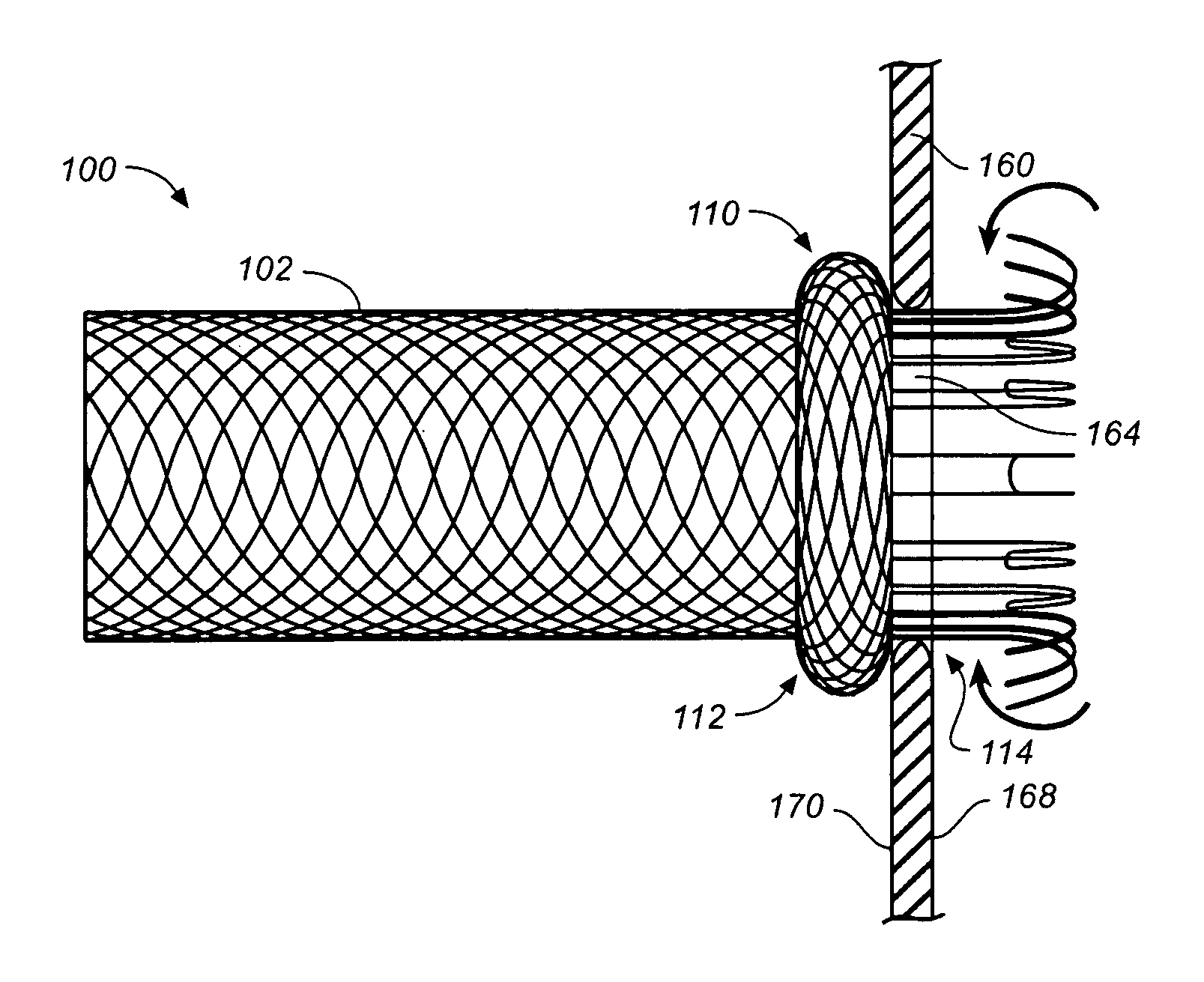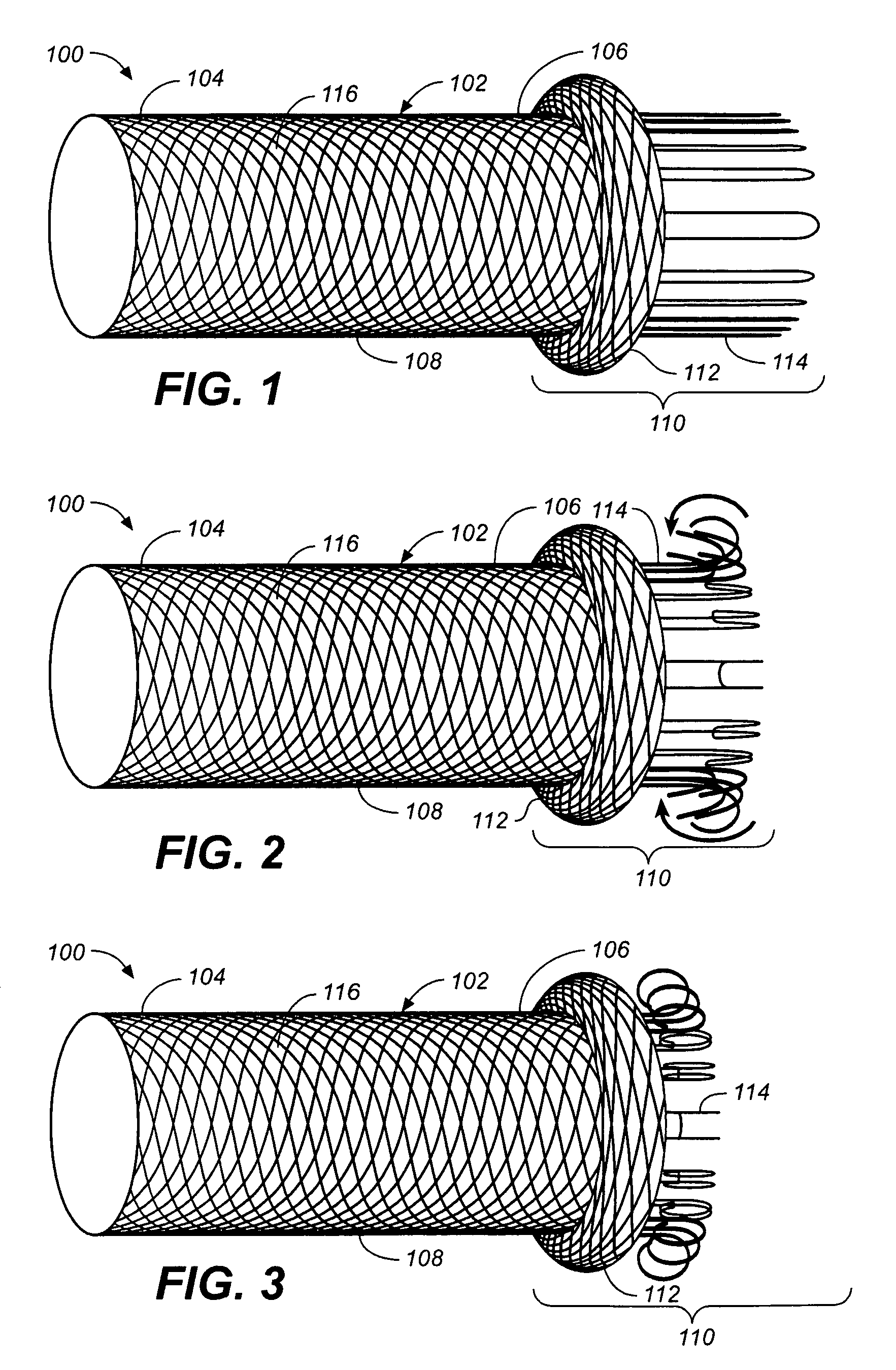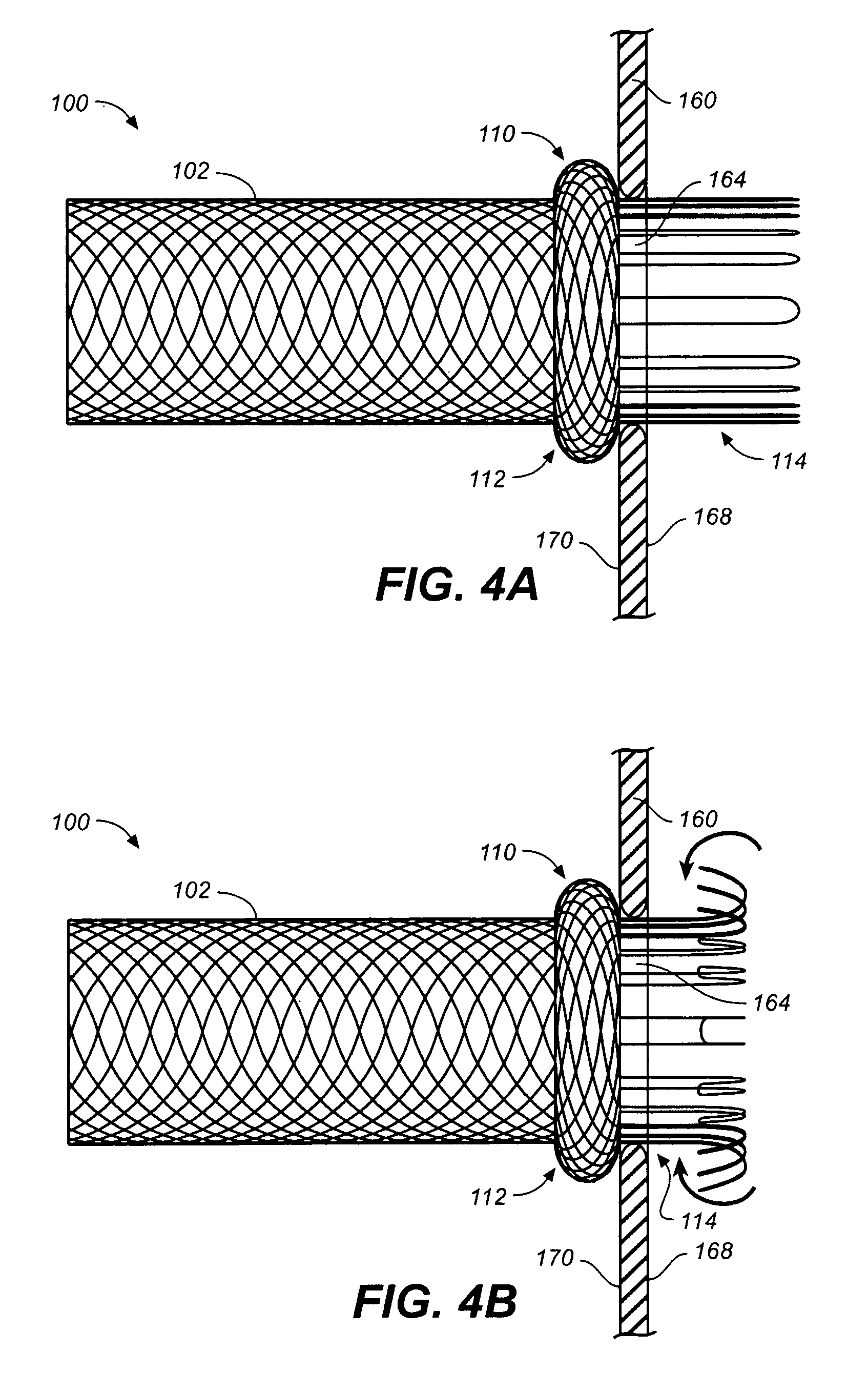Branch vessel prosthesis with a roll-up sealing assembly
a technology of sealing assembly and blood vessel, applied in the field of endoluminal medical devices and procedures, can solve the problems of internal bleeding, potentially life-threatening conditions, weak, thin blood vessel walls, etc., and achieve the effect of low profil
- Summary
- Abstract
- Description
- Claims
- Application Information
AI Technical Summary
Benefits of technology
Problems solved by technology
Method used
Image
Examples
Embodiment Construction
[0036]Specific embodiments are now described with reference to the figures, wherein like reference numbers indicate identical or functionally similar elements. Unless otherwise indicated, with respect to intravascular prostheses described herein such as branch prosthesis 100, the terms “distal” and “proximal” are used in the following description with respect to a position or direction relative to the heart. “Distal” and “distally” are positions distant from or in a direction away from the heart by blood flow path, and “proximal” and “proximally” are positions near or in a direction toward the heart by blood flow path. With respect to delivery systems described herein, the terms “distal” and “proximal” are used in the following description with respect to a position or direction relative to the treating clinician. “Distal” and “distally” are positions distant from or in a direction away from the clinician, and “proximal” and “proximally” are positions near or in a direction toward t...
PUM
 Login to View More
Login to View More Abstract
Description
Claims
Application Information
 Login to View More
Login to View More - R&D
- Intellectual Property
- Life Sciences
- Materials
- Tech Scout
- Unparalleled Data Quality
- Higher Quality Content
- 60% Fewer Hallucinations
Browse by: Latest US Patents, China's latest patents, Technical Efficacy Thesaurus, Application Domain, Technology Topic, Popular Technical Reports.
© 2025 PatSnap. All rights reserved.Legal|Privacy policy|Modern Slavery Act Transparency Statement|Sitemap|About US| Contact US: help@patsnap.com



